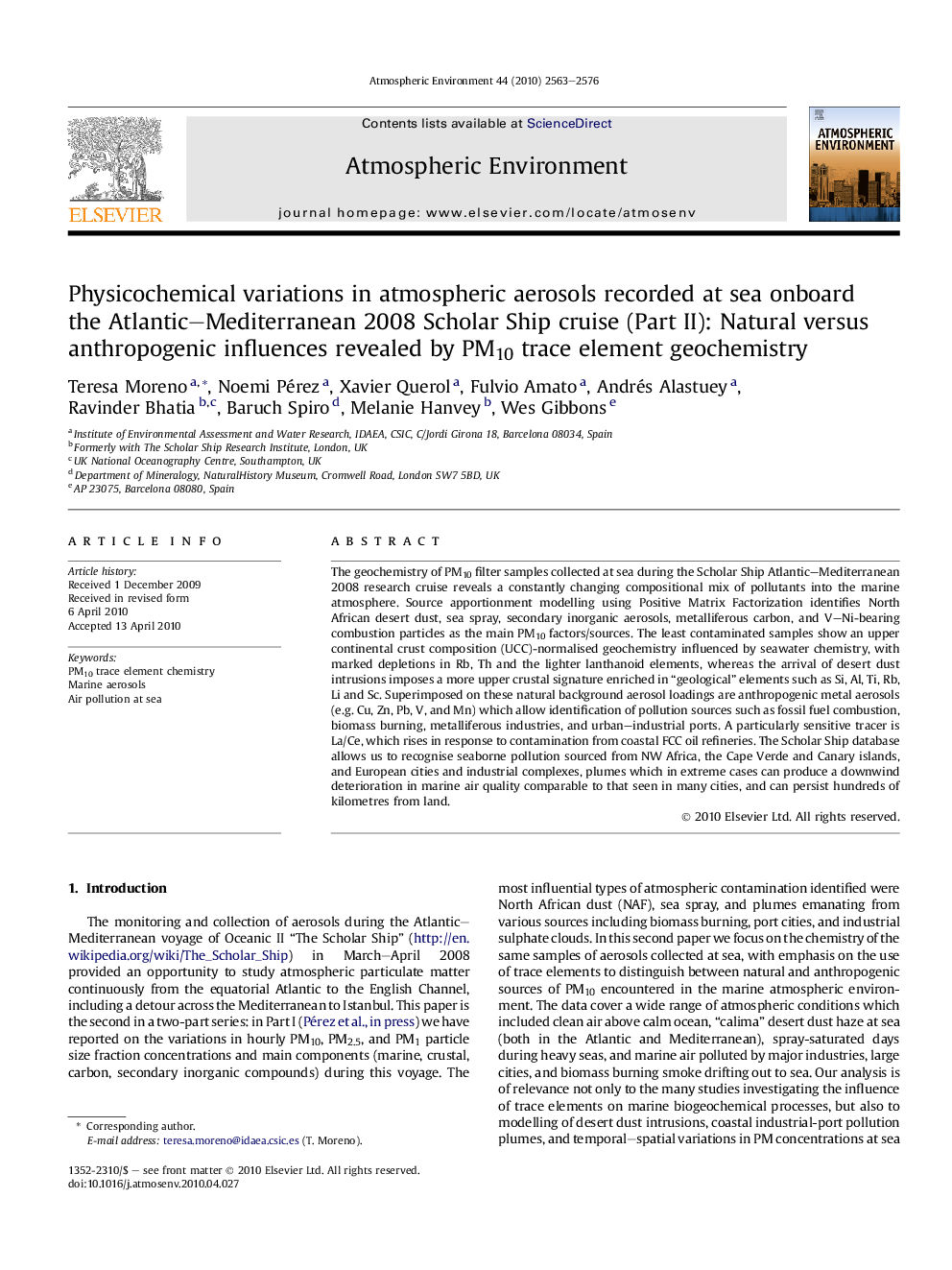| Article ID | Journal | Published Year | Pages | File Type |
|---|---|---|---|---|
| 4440273 | Atmospheric Environment | 2010 | 14 Pages |
The geochemistry of PM10 filter samples collected at sea during the Scholar Ship Atlantic–Mediterranean 2008 research cruise reveals a constantly changing compositional mix of pollutants into the marine atmosphere. Source apportionment modelling using Positive Matrix Factorization identifies North African desert dust, sea spray, secondary inorganic aerosols, metalliferous carbon, and V–Ni-bearing combustion particles as the main PM10 factors/sources. The least contaminated samples show an upper continental crust composition (UCC)-normalised geochemistry influenced by seawater chemistry, with marked depletions in Rb, Th and the lighter lanthanoid elements, whereas the arrival of desert dust intrusions imposes a more upper crustal signature enriched in “geological” elements such as Si, Al, Ti, Rb, Li and Sc. Superimposed on these natural background aerosol loadings are anthropogenic metal aerosols (e.g. Cu, Zn, Pb, V, and Mn) which allow identification of pollution sources such as fossil fuel combustion, biomass burning, metalliferous industries, and urban–industrial ports. A particularly sensitive tracer is La/Ce, which rises in response to contamination from coastal FCC oil refineries. The Scholar Ship database allows us to recognise seaborne pollution sourced from NW Africa, the Cape Verde and Canary islands, and European cities and industrial complexes, plumes which in extreme cases can produce a downwind deterioration in marine air quality comparable to that seen in many cities, and can persist hundreds of kilometres from land.
